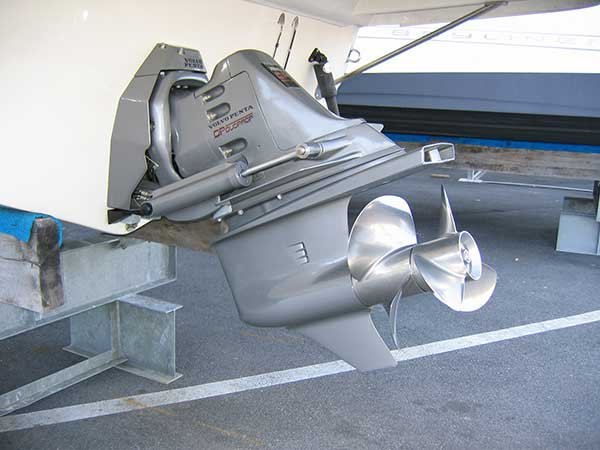When you start up your engine, there’s a lot of activity at the stern of your boat. You push the throttle, engaging the prop. Power from your engine is transferred to the outdrive via the drive shaft. Exhaust is pushed from the engine and exits at your prop. All of these functions start inside your boat and end at the outdrive, and they require holes through the transom of your boat, at or below the waterline: One for the throttle cable, one for the drive shaft, and one for the exhaust. And there’s only one thing that keeps the water outside the boat from entering those openings — the outdrive’s bellows, those black corrugated rubber things that are clamped to the boat’s transom and outdrive in a place that makes them really hard to see. Perhaps the old saying, “out of sight, out of mind,” is why bellows become such a big issue when it comes to sinkings. Take away the biggest and most obvious cause of boat sinkings at the dock — hurricanes — what do you think comes in second place? Outdrive bellows failures.
By the nature of their design I/O’s, or sterndrives, are vulnerable to salt water ingress at the transom and especially susceptible to corrosion. Before your boat goes back into the water, you should remove the outdrive(s) and:
- Inspect the condition of the rubber bellows and their clamps. Are there any obvious signs of cracking? Is the rubber becoming brittle? Is there any rust showing on the bellows? Do the stainless steel clamps show any signs of corrosion? If you spot any marine growth (barnacles, mussels, or the like), they have got to go. Barnacles and broken shells can be razor sharp and your rubber bellows won’t stand a chance against them. If there is any doubt, replace the bellows.
- Check the gimbal bearing for signs of wear.
- Drain oil to check for evidence of water due to leaking prop shaft seal or water pump seal. Replace with new oil.
- Inspect the raw water cooling system, checking impeller, cleaning strainer gauzes and removing salt from passageways. Reassemble and paint.
- Remove the prop, inspect it for damage and grease the shaft.
- Align and lubricate the gimbal bearing, universal joint and drive shaft on re-installation.
- Replace the zincs.

